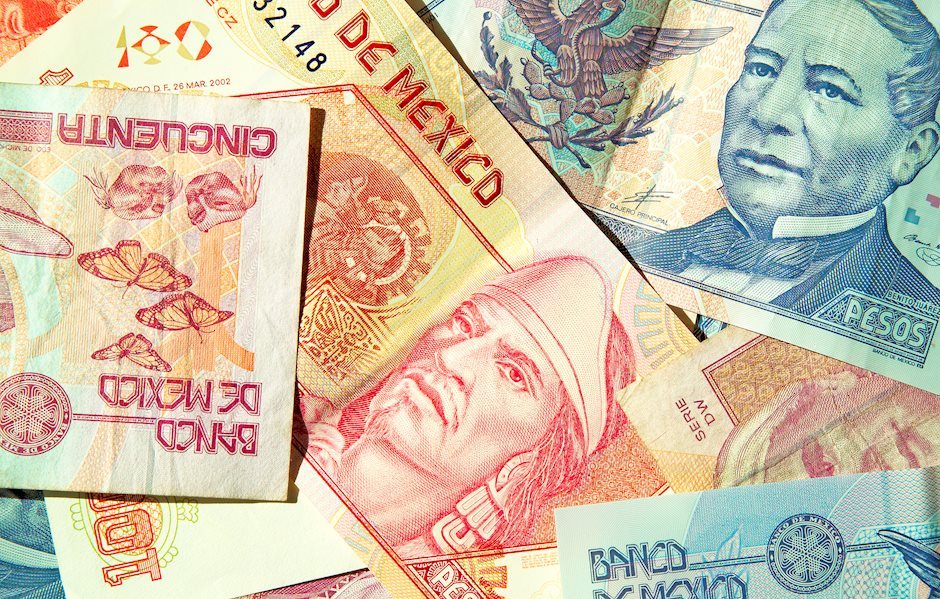Mexican Peso surges ignoring US data, Fed’s Powell comments
- Mexican Peso rises despite higher US Treasury yields, mixed data.
- Atlanta Fed President Bostic’s hawkish outlook sponsored traders repricing for a less dovish Fed.
- US jobs data was strong, while Services PMI suggests business activity decelerates.

The Mexican Peso posts gains against the US Dollar on Wednesday as US Treasury yields climbed, sponsored by Atlanta Federal Reserve President Raphael Bostic's hawkish comments. Economic data from the United States (US) was mixed, while goodish Gross Fixed Investment figures in Mexico capped the emerging market currency’s fall. The USD/MXN trades at 16.53, down 0.11%.
The Greenback is trading mixed during the session, depreciating against most G8 currencies but clocking gains against emerging market ones. Atlanta Fed President Raphael Bostic highlighted the economy's strong momentum but emphasized the need for growth and inflation to slow. He anticipates a rate cut in the last quarter of 2024 and projects inflation to reach the Fed's 2% target by 2026.
Recently, Fed Chair Jerome Powell stated the US central bank has time to deliberate about rate cuts, given the strength of the economy and the inflation readings. He reiterated that if the economy evolves as expected, they will cut borrowing costs “at some point this year.”
Nevertheless, Powell emphasized that could happen once they “have greater confidence that inflation is moving sustainably down.”
Data-wise, the US economic docket features employment data and Services Purchasing Managers Index (PMI) by S&P and the Institute for Supply Management (ISM). Automatic Data Processing (ADP) revealed that private hiring increased above estimates and the previous month’s reading in March, portraying a tight labor market, which is positive for the Greenback. However, recently released data suggesting that business activity is cooling down, as portrayed by S&P Global and ISM Services PMI, capped US Dollar recovery.
Daily digest market movers: Mexican Peso advances, shrugging off mixed US data
- Mexico’s Gross Fixed Investment figures in January came at 0.1% MoM, up from December’s 0%. In the twelve months to January, investment grew 15.3%, crushing December’s 13.4% increase.
- Last week, Banxico Governor Victoria Rodriguez Ceja remained dovish despite acknowledging that the battle against inflation hasn’t been won. She added, “When macroeconomic conditions and the inflationary outlook allow us to make additional adjustments to the reference rate to the one we already have, I consider that they would be gradual.”
- The ADP Employment Change in March was 184K, above the 148K foreseen by the consensus and February’s 155K.
- S&P Global revealed that the Services PMI came to 51.7, down from 52.3, while the Composite Index slowed from 52.5 to 52.1. The ISM revealed that Non-Manufacturing PMI was 51.4, down from 52.6 and lower than projections for a 52.7 expansion.
- On Tuesday, Cleveland Fed President Loretta Mester said that she doesn’t have enough information for a May meeting cut yet foresees three rate cuts in 2024. Mester added the Fed’s challenge would be balancing the risks between inflation and employment.
- San Francisco Fed President Mary Daly said the Fed needs to see how long to keep rates at current levels. She supports three rate cuts but added that it’s a projection, not a promise.
- Regarding future interest rate expectations of the Fed, the CME FedWatch Tool suggests that traders see a 57% chance of the US central bank cutting borrowing costs.
Technical analysis: Mexican Peso buyers in charge but could shift neutral with USD/MXN clearing 16.70
The USD/MXN remains bearish with sellers eyeing a re-test of the year-to-date (YTD) low of 16.51. Nevertheless, the pair could consolidate at 16.50 as the Relative Strength Index (RSI) remains in bearish territory. But sellers are losing momentum. However, a push below 16.50 would expose the October 2015 low of 16.32, ahead of the 16.00 mark.
On the flip side, If USD/MXN buyers enter, they must lift the exchange rate above the 16.70 area. Once cleared, the next stop would be the 50-day Simple Moving Average (SMA) at 16.94, with further upside seen at the 100-day SMA at 17.04, ahead of the 200-day SMA at 17.18.
Mexican Peso FAQs
The Mexican Peso (MXN) is the most traded currency among its Latin American peers. Its value is broadly determined by the performance of the Mexican economy, the country’s central bank’s policy, the amount of foreign investment in the country and even the levels of remittances sent by Mexicans who live abroad, particularly in the United States. Geopolitical trends can also move MXN: for example, the process of nearshoring – or the decision by some firms to relocate manufacturing capacity and supply chains closer to their home countries – is also seen as a catalyst for the Mexican currency as the country is considered a key manufacturing hub in the American continent. Another catalyst for MXN is Oil prices as Mexico is a key exporter of the commodity.
The main objective of Mexico’s central bank, also known as Banxico, is to maintain inflation at low and stable levels (at or close to its target of 3%, the midpoint in a tolerance band of between 2% and 4%). To this end, the bank sets an appropriate level of interest rates. When inflation is too high, Banxico will attempt to tame it by raising interest rates, making it more expensive for households and businesses to borrow money, thus cooling demand and the overall economy. Higher interest rates are generally positive for the Mexican Peso (MXN) as they lead to higher yields, making the country a more attractive place for investors. On the contrary, lower interest rates tend to weaken MXN.
Macroeconomic data releases are key to assess the state of the economy and can have an impact on the Mexican Peso (MXN) valuation. A strong Mexican economy, based on high economic growth, low unemployment and high confidence is good for MXN. Not only does it attract more foreign investment but it may encourage the Bank of Mexico (Banxico) to increase interest rates, particularly if this strength comes together with elevated inflation. However, if economic data is weak, MXN is likely to depreciate.
As an emerging-market currency, the Mexican Peso (MXN) tends to strive during risk-on periods, or when investors perceive that broader market risks are low and thus are eager to engage with investments that carry a higher risk. Conversely, MXN tends to weaken at times of market turbulence or economic uncertainty as investors tend to sell higher-risk assets and flee to the more-stable safe havens.
Author

Christian Borjon Valencia
FXStreet
Christian Borjon began his career as a retail trader in 2010, mainly focused on technical analysis and strategies around it. He started as a swing trader, as he used to work in another industry unrelated to the financial markets.


















